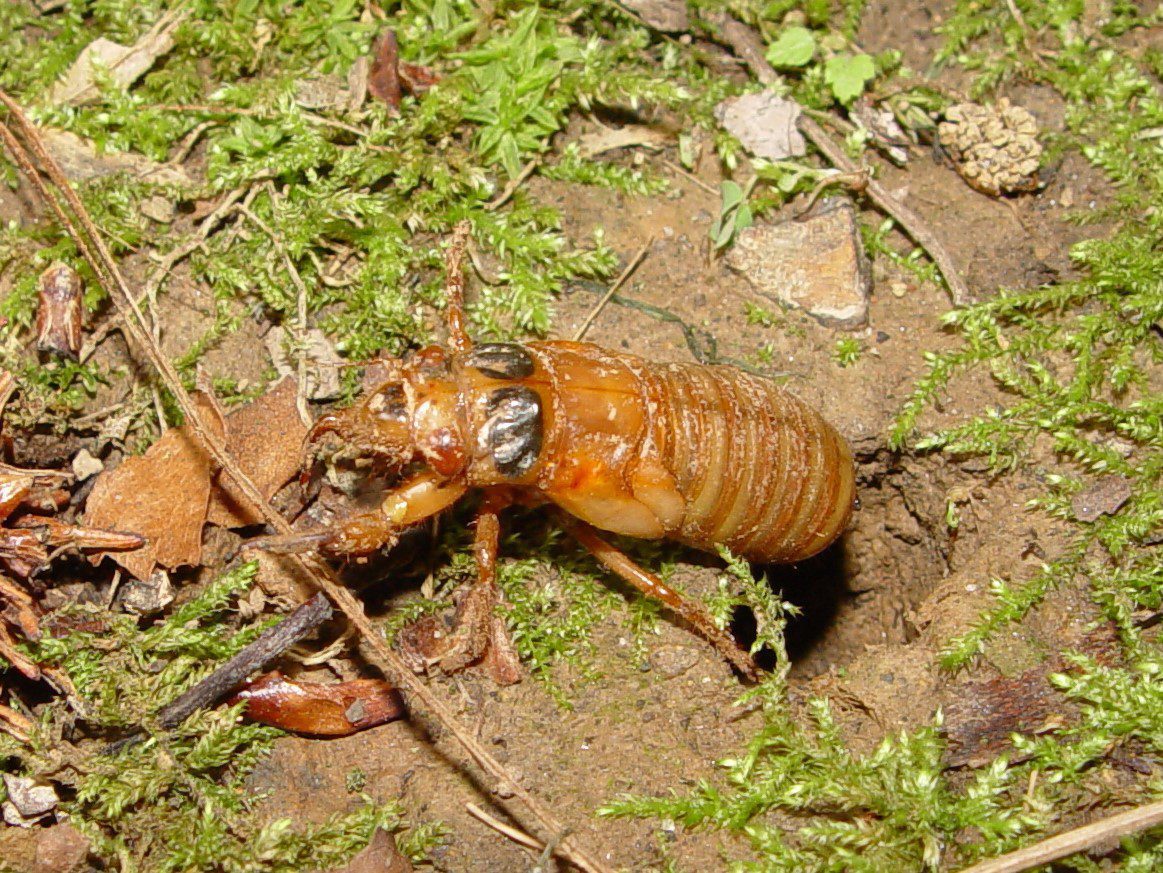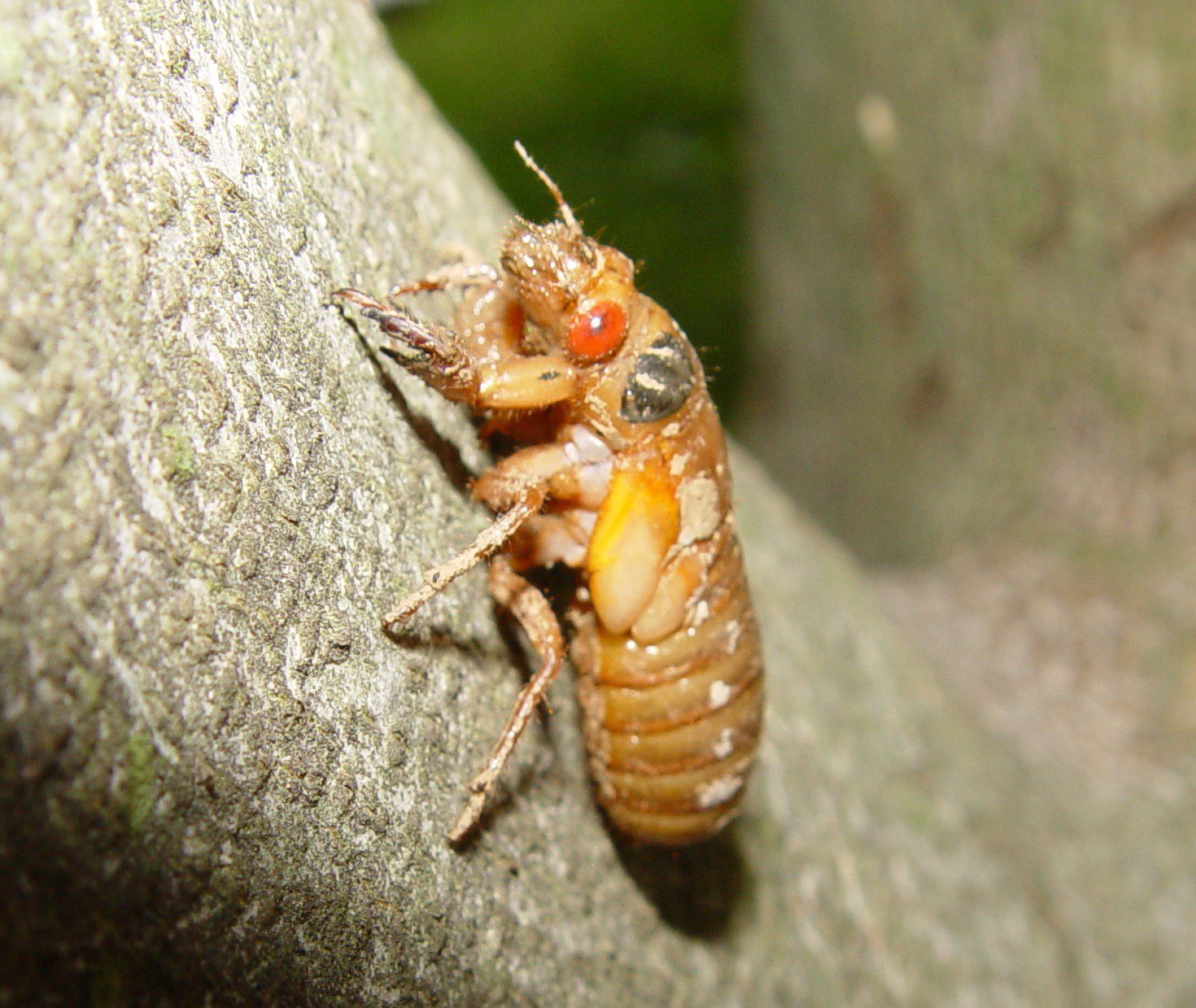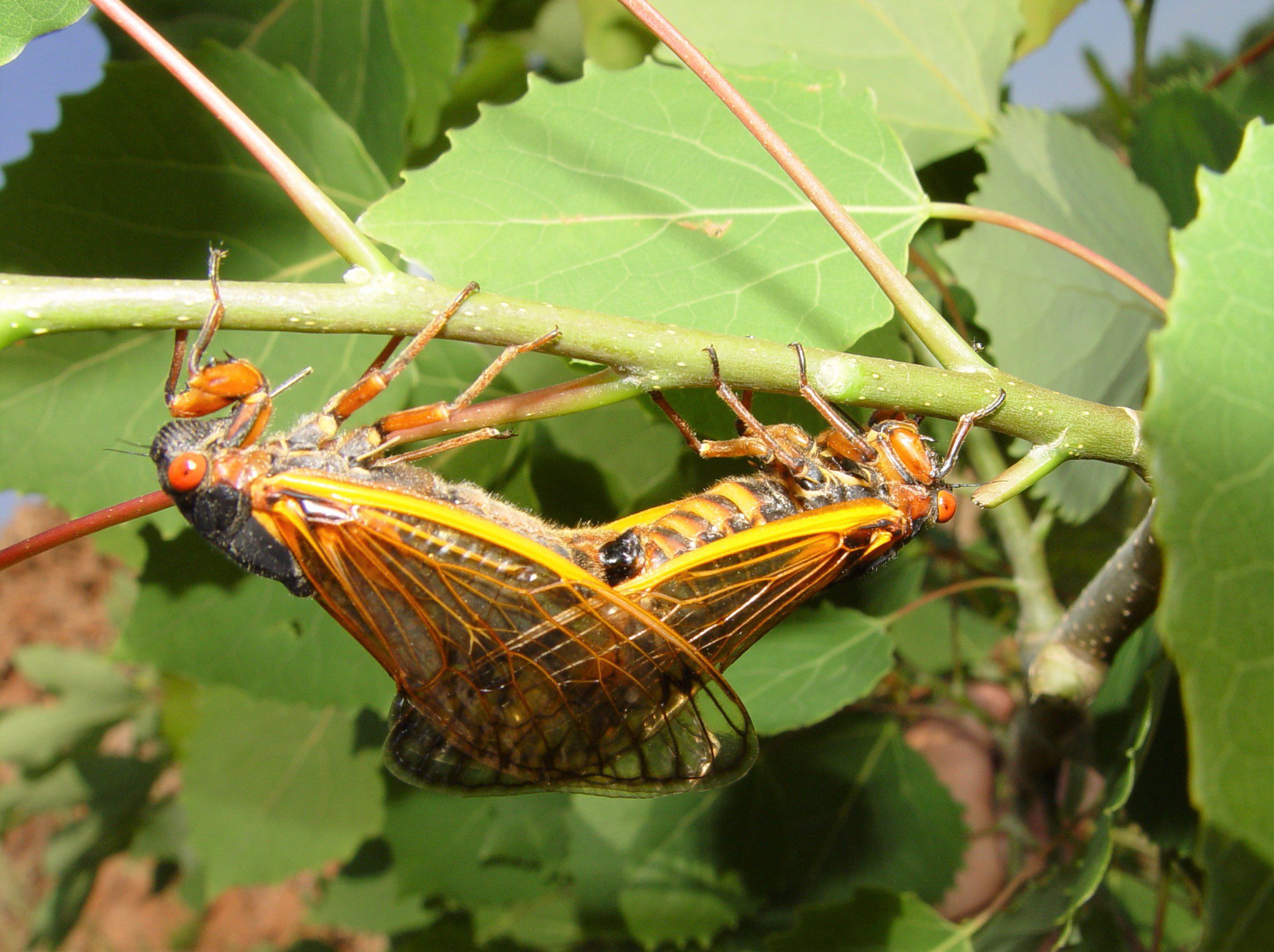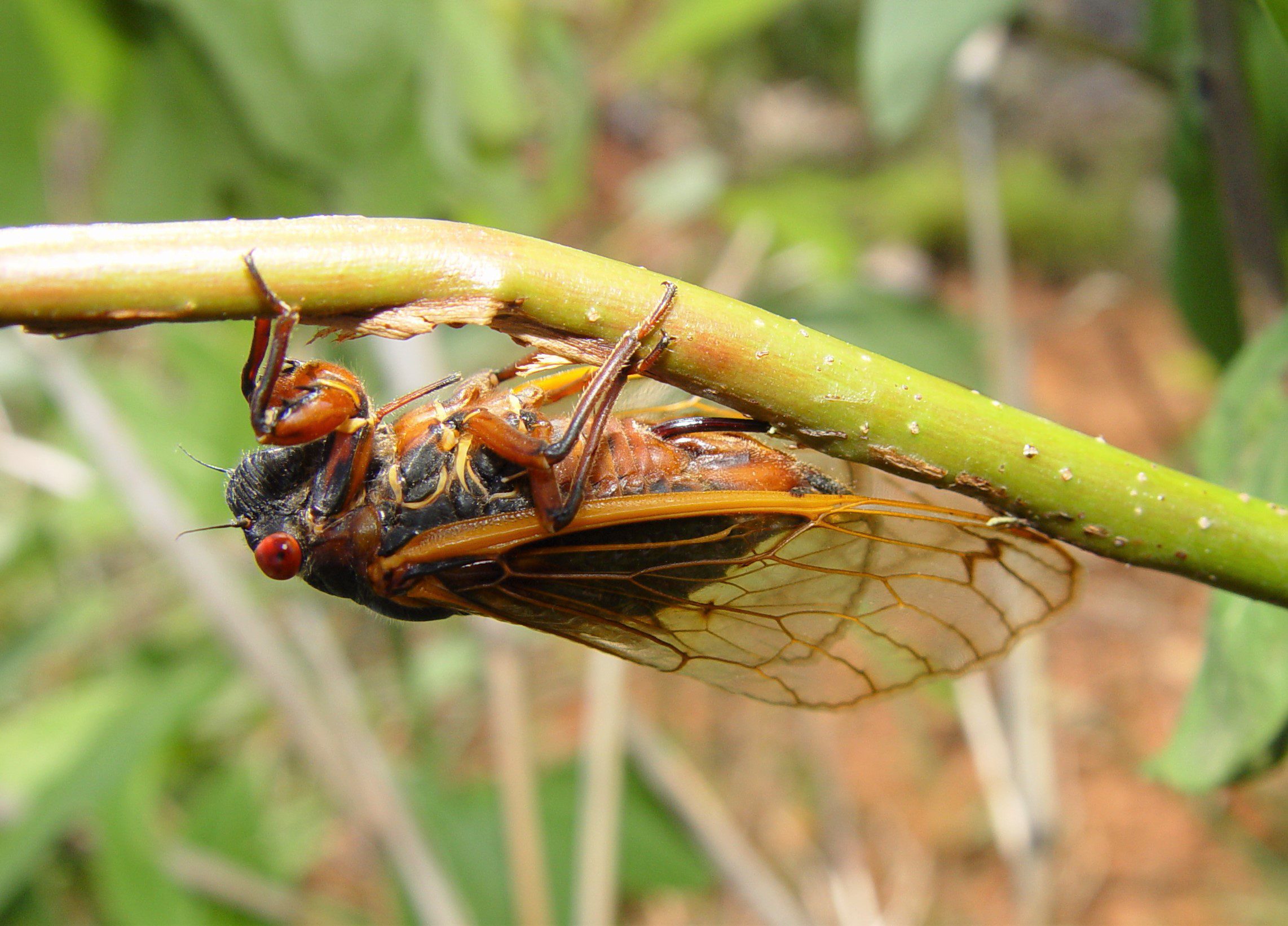The year was 2004: the Boston Red Sox won their first World Series since 1918; a young nerd named Mark Zuckerberg launched a social media site called Facebook; and in late May another not-so-young nerd (me) was wandering around southern Newark, Delaware listening to an amazing cacophony of strange sounds emanating from every tree above me. The sounds were the mating calls of 17-year cicadas.
Fast-forward to 2021: the Red Sox are in first place in the American League East; Facebook is more than still around; and the 17-year cicadas are emerging again.
The Return of 17-Year Cicadas Brood X
After living underground for 17 years and feeding on the sap flowing in tree roots, the immature insects (nymphs) are tunneling their way to the surface where they will emerge and crawl up nearby trees.

On trunks, branches, and leaves the nymphs will shed their exoskeleton (leaving it attached to the tree) and become winged adults. If you are like me, watching this act may conjure up images of aliens in sci-fi movies. At first, they are teneral and will be pale yellow with red eyes, and soft. But soon after their exoskeleton will begin to harden and turn black. They will remain silently in the trees for several days waiting for the hardening process to finish.


How Do Cicadas Make That Loud Sound?
When the exoskeleton is completely hardened, the male begins calling, emitting a loud buzzing sound that is produced by vibrating drum-like membranes, called tymbals, located on the sides of the abdomen. Males tend to call in unison – thus creating a loud chorus. Females are attracted to the calling males waiting in the branches. After mating, a female will excavate a Y-shaped hole in a living tree branch with her ovipositor and deposit up to 20 eggs in each “nest” hole. She may lay as many as 600 eggs during her short adult life. Eggs hatch into tiny first-instar nymphs in six to ten weeks and drop to the ground, quickly burrowing down to locate a suitable rootlet on which to feed. This begins a new 17-year cycle of these amazing insects. (The adult insects, though they do feed, don’t live long after reproducing.)


Interesting to me is that, although there are over 3,000 species of cicada worldwide, only seven species are periodical –that is, only seven species synchronize their emergence after spending many years underground (13 or 17 years, depending on the species). All other cicadas, like our annual “Dog Day” Cicada spend four or less years under ground and emergences take place every year.
17-Year Cicada Brood X in Delaware & Maryland
In our area there are three species of 17-year cicadas that are emerging this Spring: Magicicada septendecim, Magicicada cassini and Magicicada septendecula. Although similar in appearance, the three species have different-sounding calls. Scientists have called the group that is emerging this year Brood X (ten) or the Great Eastern Group. Brood X is one of 15 broods of periodical cicadas and has the largest range of all the broods and is probably the most witnessed by humans.
It is astonishing how many cicadas emerge in some areas. Tree trunks, shrubs even screen porches can be covered with emerging cicadas. Recorded densities of emerging Brood X have been estimated at 1.5 million per acre. Although many animals feed on the cicadas as they emerge, the synchronization of emergence produces so many individuals at one time that the predators are overwhelmed and are just unable to eat all of them. Thus, many individuals are able to evade being eaten and can reproduce.
Head to the Forests to See this Natural Phenomenon!
The time is here to witness this incredible natural spectacle.
If the Brood X emergences in 1987 and 2004 are any indication, forested areas in southern Newark, Delaware will be the best locations to see and hear the cicadas. Elkton, Maryland and it’s surrounding areas should also experience a large emergence. There may be sightings in other locations, too, so listen closely when outside. (Most likely Kent and Sussex County and much of New Castle County, Delaware will not witness Brood X.).
I believe that the best places to observe the sights and sounds of thousands of cicadas should be Iron Hill County Park and forested and residential areas with large trees in Glasgow and Chestnut Hill just south of Newark. The optimal time for viewing is on warm days from mid-morning to mid-afternoon. This incredible natural phenomenon should continue only until the middle of June. After that you will have to wait until 2038 to witness the Brood X emergence again.
Photos by Jim White, Senior Fellow for Land and Biodiversity